This is the first installment in a two-part investigative series on governments, spies, and the oil and gas industry. See here for part two.
“Mr. Tremblay, do you remember me?”
Ron Tremblay was just walking out of the Lord Beaverbrook hotel when a young woman in a dark-blue pantsuit approached him. The Lord Beaverbrook is a beige, unremarkable edifice that sits in downtown Fredericton, kitty-corner to the New Brunswick legislature. On this summer morning last August, a panel of Canada’s federal energy regulator, the National Energy Board (NEB), was holding hearings at the hotel about the proposed Energy East pipeline – which is designed to carry oil from the tar sands of Alberta to New Brunswick’s port city of Saint John.
As the Grand Chief of the Wolastoq Grand Council – whose territory Energy East would cross – Tremblay had gone to listen to fellow opponents of the pipeline give a presentation before the NEB panel. When the young woman caught up to him, she introduced herself as RCMP Constable Joanne Spacek, working for a “Special Projects Unit” out of Moncton, NB.
“I was wondering if we could have a coffee sometime,” Spacek asked Tremblay.
A stocky, friendly, open-faced man in his mid-50s who wears dark-rimmed glasses, Tremblay agreed to meet with her.
An unmarked van parked outside his house
A couple of months later Tremblay met with Spacek in Fredericton. “I didn’t hide anything from her,” he recalls about their discussion. “I told her we want to protect our sacred ways, land and water and not want it poisoned.” Spacek, however, had her own concerns: namely the RCMP didn’t want the "wrong people" causing disturbances over the construction of resource development projects like Energy East. Tremblay understood what she was referring to: namely warriors from First Nations’ communities and other environmental activists. After awhile, Tremblay felt Spacek was trying to pump him for information about plans for any protests.
This was not the first time Tremblay has confronted the RCMP. In 2013, he was arrested by the Mounties while peacefully participating in a blockade near the village of Rexton, on the east coast of New Brunswick. For weeks, a group of mostly Native anti-shale gas protesters blocked a compound where a fracking company’s vehicles and equipment were being stored, along with other actions. This protest galvanized opposition to fracking, leading to a moratorium in the province.
During the blockade, Tremblay says he was followed by vehicles, which he presumed were RCMP, when he drove back and forth from his home in Fredericton to Rexton. And for three months after the protest ended, a white unmarked van was explicitly parked outside of his house.
“When I would leave for work, the van would be there,” he says, and then would drive off soon afterwards. “I was on their radar list,” he remarks.
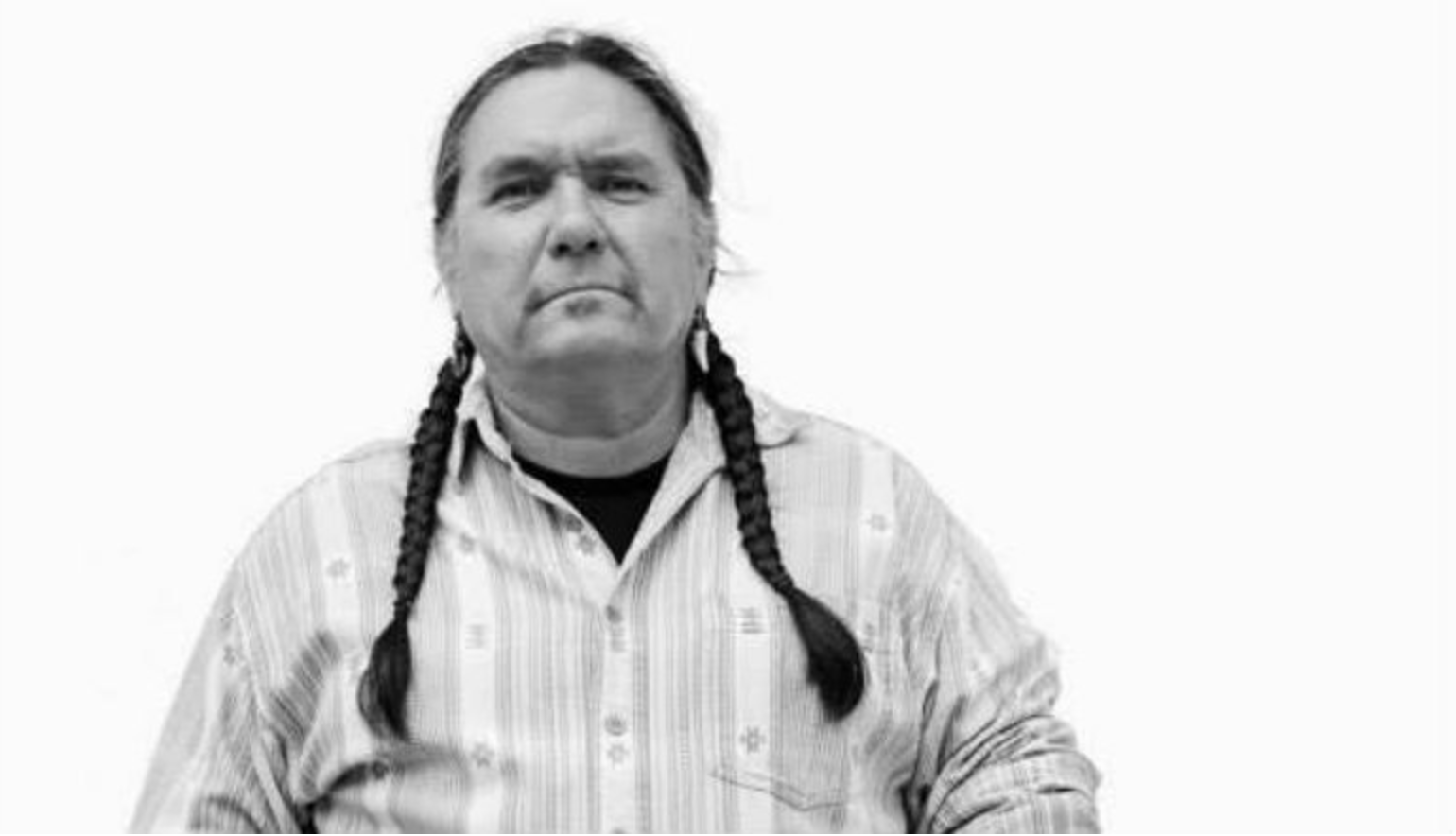
"Do I know you?"
Yet Tremblay was not the only opponent of Energy East that Spacek approached last summer – and since then. A few days before the NEB arrived in Fredericton, the RCMP constable was in Saint John attending the Board’s hearings held at the city’s trade and convention centre. There, Spacek introduced herself to a number of environmentalists, including Lynaya McKinley, the 37-year-old spokesperson for a local group opposed to Energy East.
“All of a sudden she started talking to me and she said my first name – and she even knew how to say my first name, which is unusual,” recalls McKinley. “And she said ‘Oh you are with the Council of Canadians aren’t you’ and I said ‘Do I know you?’”
Spacek asked McKinley if she wanted to take her business card, suggesting she could call her any time. McKinley declined.
“I felt it was quite intimidating,” she says. “It makes me wonder ‘Are these people spying on me? Do they have a file on me somewhere? Why would this person know my name?’… I thought it was an invasion of privacy, really.” McKinely says Spacek told her she had seen McKinely at a march against Energy East held the previous year.
More recently, the Council of Canadians drafted a letter to the RCMP saying that this past January Spacek, “invited herself to a meeting organized by Red Head residents with the Saint John Fire Department and Police Department, a meeting dedicated to Emergency Measures (e.g. warning notices, evacuation) issues of concern to the residents.
"This meeting… was not an open, public meeting but was arranged through invitation to Red Head residents…During the meeting, Constable Spacek never introduced herself, or her role, at the meeting, and spent the meeting observing and making notes in a black hardcover note book. Constable Spacek approached some residents after the meeting and asked if she could contact them for a meeting.”
The RCMP officer also telephoned Saint John environmentalist and businesswoman Sharon Murphy several times at her home, wanting to meet with her.
“She wanted to discuss my participation in the energy projects,” recalls Murphy, “in that there were lots of things we could do which were legal, but that there were other things that weren’t and she would be happy to discuss these and meet with me. Like she wanted to be some sort of guide.” So far, Murphy has not met with Spacek.
When reached by National Observer, Const. Spacek — who is Indigenous herself — said that she's been in the Special Unit for two years and her job is: "liasioning with First Nations groups and with industry. Just sharing information. And when they organize events that everyone is safe and when they do it, they do it lawfully as well. So, really, my role is liasioning with them... It’s to build relations with industry and First Nations. On a positive note."
Spacek acknowledged there have been poor relations between First Nations and the RCMP. "I know there is a lack of trust and my role is to liase and rebuild those relations," she says, adding that she's been received positively by people she has spoken to. "I am enjoying what I am doing and have not been received negatively."
A well-funded apparatus of espionage
Still, this kind of outreach and surveillance by the RCMP of Indigenous and environmental activists is just one aspect of the work carried out by the federal government’s massive, sophisticated and well-funded apparatus that carries out espionage aimed at opponents of oilsands, pipelines, fracking and mining.
“It’s a vast network – a surveillance system of ministries and departments within the government that are all holding close hands with corporations,” says Shiri Pasternak, a Canadian studies professor at Trent University who has been studying this issue.
Documents released through Canada’s access to information laws – requested by media, academics and NGOs – reveal who the government is spying on, how they do it, whom they select as targets, and by which government agencies. The espionage network includes the RCMP, the Canadian Security Intelligence Service (CSIS), along with the National Energy Board (NEB), Canada Border Services Agency (CBSA) and departments of Public Safety, Natural Resources, Transport, Indigenous Affairs and Defence. It also involves provincial police, such as the Sûreté du Québec and Ontario Provincial Police (OPP), as well as some municipal police forces.
Moreover, these agencies and departments share the information they gather with one another and, more importantly, with numerous energy sector companies, such as Enbridge Inc. and Canadian Natural Resources Ltd., to name two. In fact, evidence suggests the federal government has, in effect, become the security arm of the energy industry.
By far the bulk of this spying is aimed at First Nations’ activists and communities. Recently VICE News reported CSIS was monitoring the protests at Standing Rock reservation, where the Sioux having been trying to stop the Dakota Access Pipeline, worried about its Canadian implications.
“There is disproportionate targeting and criminalization of Indigenous peoples compared to the rest of the public,” says Clayton Thomas-Muller of the Mathais Colomb Cree Nation in Manitoba, who works as a tar sands campaigner with the climate change organization 350.org. Thomas-Muller has been the target of RCMP surveillance himself. This focus on First Nations, he notes, is because resource development projects “tend to be in places where Native people live.”

More crucially, Indigenous people have proven effective at stopping or slowing down resource development projects, such as pipelines, especially in places such as BC, Quebec and on the east coast. And as pipelines such as the Energy East, Keystone XL and Kinder Morgan ramp up, Native opposition is expected to be the biggest obstacle the energy sector will face.
RCMP's Project SITKA
The scope of the espionage was revealed last year when researchers at the Ontario Public Interest Research Group (OPIRG) and Carleton University pried loose an RCMP document describing “Project SITKA”. Written in early 2015, the report says Project SITKA was designed by the RCMP to focus on providing “a snapshot of individual threats associated with Aboriginal public order events for the year 2014” as well as map out the potential networks among Native groups, identify protesters and events they attended.
In total, Project SITKA identified 313 people of interest, of whom 89 were considered to have met the criteria of “criminality associated to public order events.” This latter group had extensive profiles – including headshots, phone numbers, email addresses and details of their mobility within Canada – that were entered into a databank that could be accessed by “frontline officers”, divisional analysts and other police agencies.
“(Project SITKA) gave us a first real glimpse into how powerful the databanks were,” says Jeffrey Monaghan, a criminologist at Carleton University who has researched this espionage for years.
The report said the Mounties had asked various government departments to provide a list of activists, including their actions, in some cases going back years. “They were able to go back into the data banks, make up lists of who were at demonstrations, who were at events, who was talking on social media and they were able to backtrack for five years and make these lists,” says Monaghan.

Among the many organizations or movements Project SITKA identified as being of interest were Idle No More, the Mi’kmaq Warrior Society, American Indian Movement, the Indigenous Environmental Network, Defenders of the Land, along with the Council of Canadians, Ontario Coalition Against Poverty and media co-ops in Toronto, Vancouver and Halifax.
“It’s a remarkable little window into how much data they have accumulated on these movements and how they essentially conduct quasi-criminal investigations of people without ever notifying them, no one knows they are in there, no one can challenge the data,” says Monaghan. “So it gives a frightening idea of how much data is being stored."
In a response to questions about Project SITKA, the RCMP said in a statement to the National Observer: "Project SITKA was not a surveillance operation. Project SITKA used open-source information along with local knowledge to identify individuals for whom there was an objective means to demonstrate criminal and violent intentions. If information presented itself that one of these individuals would attend a particular protest, that information was shared with local police for awareness and to ensure the safety of all parties... As noted in the conclusion of the Project SITKA report, the information contained in it would help inform the RCMP in terms of developing a way forward that recognizes the differences in large-scale public order events that sometimes involve Indigenous people."
Harper ramps up espionage
Police and intelligence agencies like the RCMP, CSIS and Canada's signals intelligence agency, the Communications Security Establishment (CSE), have a long history of spying on all manner of activists. But the current focus on Native and environmental protesters is rooted in changes to the Canadian economy.
By the mid-2000s, with the decline of its manufacturing base, Canada’s economy was shifting towards resource extraction – in particular developing Alberta’s oil sands. Soon the federal government was labeling such projects “critical infrastructure” – meaning highly important to the economy.
Moreover, Stephen Harper’s election in 2006 signaled the ratcheting up of spying against opponents of this sector. “In general what Harper wanted to do was use the state to minimize dissent and remove obstacles to resource development and resource extraction,” says Russell Diabo, an Ottawa-based analyst and consultant on Indigenous issues.
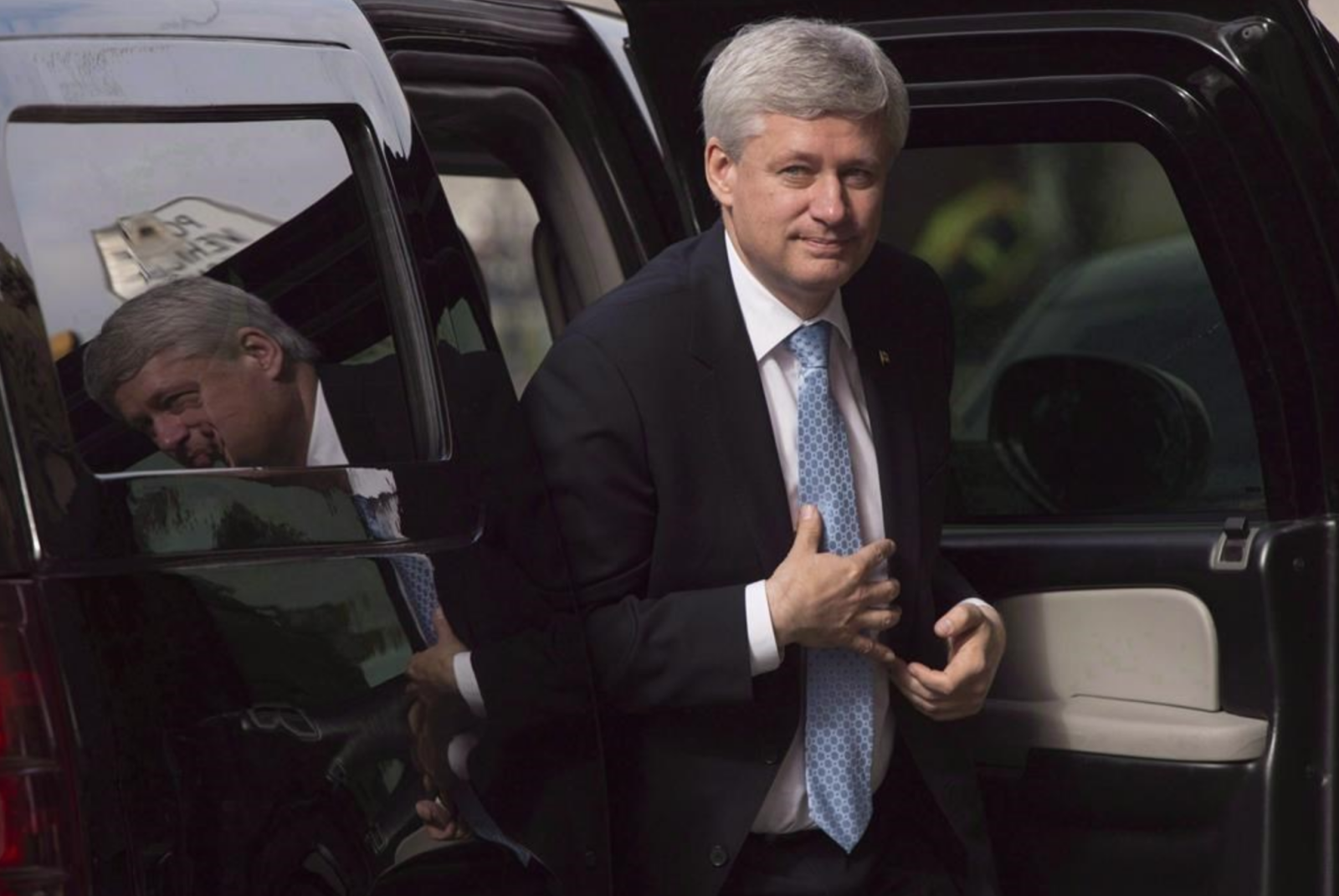
Former prime minister Stephen Harper arrives at his Langevin office in Ottawa in October 2015. File photo by The Canadian Press
Indeed, by 2007, Indigenous and Northern Affairs Canada (INAC) had been given a lead role on spying on First Nations’ communities to identify leaders, participants and supporters of protests. INAC shared the information they gathered with the RCMP, CSIS, Transport Canada and Natural Resources Canada, among others, holding weekly conference calls to discuss "in real time" First Nations protests, such as blockades and occupations. INAC created a “hotspot” reporting system with the purpose of “continuous information dissemination of existing and emerging risks,” according to a report they produced. The hotspots included Native bands across Canada, and were "related to lands and resources," according to an INAC report.
Meanwhile, numerous documents refer to the threat that Indigenous protesters posed to the energy sector’s interests. For example, the 2007 minutes of a meeting at CSIS headquarters with the RCMP, various intelligence services and energy company executives, reveal that one of the top items on the agenda was “Aboriginal Protests and Occupations.” In a 2014 RCMP report entitled “Criminal Threats to the Canadian Petroleum Industry” it notes that “Due to the environmental and land-use implications, the anti-petroleum movement… has been able to align itself with violent aboriginal extremists.”
Overall, such documents show the role of the government was clear: to shield the energy sector from such protests. As a 2011 RCMP report from its “Critical Infrastructure Intelligence Team” noted, it is “incumbent upon federal and provincial authorities to share responsibility for the protection of Canada’s energy sector with the private energy sector stakeholders.”
Meanwhile, the RCMP and CSIS and other government departments embraced the ideological mindset of energy companies on things like climate change, environmental activism and resource development. The RCMP often uses language in their reports to describe civil disobedience as “criminal” populated by “extremists” and refers to “violent extremists” – despite furnishing few real examples.
For instance, in the RCMP's 2014 “Criminal Threats to the Canadian Petroleum Industry” report, it says “governments and petroleum companies are being encouraged, and increasingly threatened, by violent extremists to cease all actions which the extremists believe, contributes to greenhouse gas emissions.” The document seems to suggest that climate change was a problem only of interest to groups like Greenpeace and Sierra Club of Canada – failing to mention it’s of concern to climate scientists, NASA, the United Nations and most governments around the world.
Yet, the same document references the position of the Canadian Association of Petroleum Producers (CAPP), noting that “all forms of energy production must increase to meet growing demand.”
In 2012, Tim O’Neill, a senior criminal intelligence research specialist with the RCMP’s Critical Infrastructure Intelligence Team (CIIT), wrote an email to colleagues, saying that “CIIT assesses that environmental extremists pose a significant criminal threat to Canada’s energy sector.” Among those groups he believed fit this category was Greenpeace. “Greenpeace activists engage in criminal activity targeting government offices, international conferences, and industrial complexes, to protest against the continued use of fossil fuels,” O’Neill wrote.
For the head of Greenpeace Canada’s climate and energy campaign, Keith Stewart, this sort of characterization reveals how divorced from reality the RCMP has become. “We have a 46-year unbroken history of nonviolence,” he says. “We’re very proud of that.” Stewart says the RCMP “associate nonviolent protests, that might be unlawful, with violence.”
RCMP creates the Aboriginal Joint Intelligence Group
The fact that First Nations were specifically being targeted is reflected in the RCMP creating the Aboriginal Joint Intelligence Group (JIG) in 2007, composed of members of the force’s National Security and Criminal Intelligence divisions.
The JIG billed itself as a “central repository” of information about First Nations protest activities – such as blockades, protests and demos – assisted by an “extensive network of contacts throughout Canada and internationally” and an undisclosed number of field operatives acting as its “eyes and ears”, according to a JIG slide presentation. It had the mandate “to collect and analyze information, and produce and disseminate intelligence concerning conflict and issues associated with Aboriginal communities.”
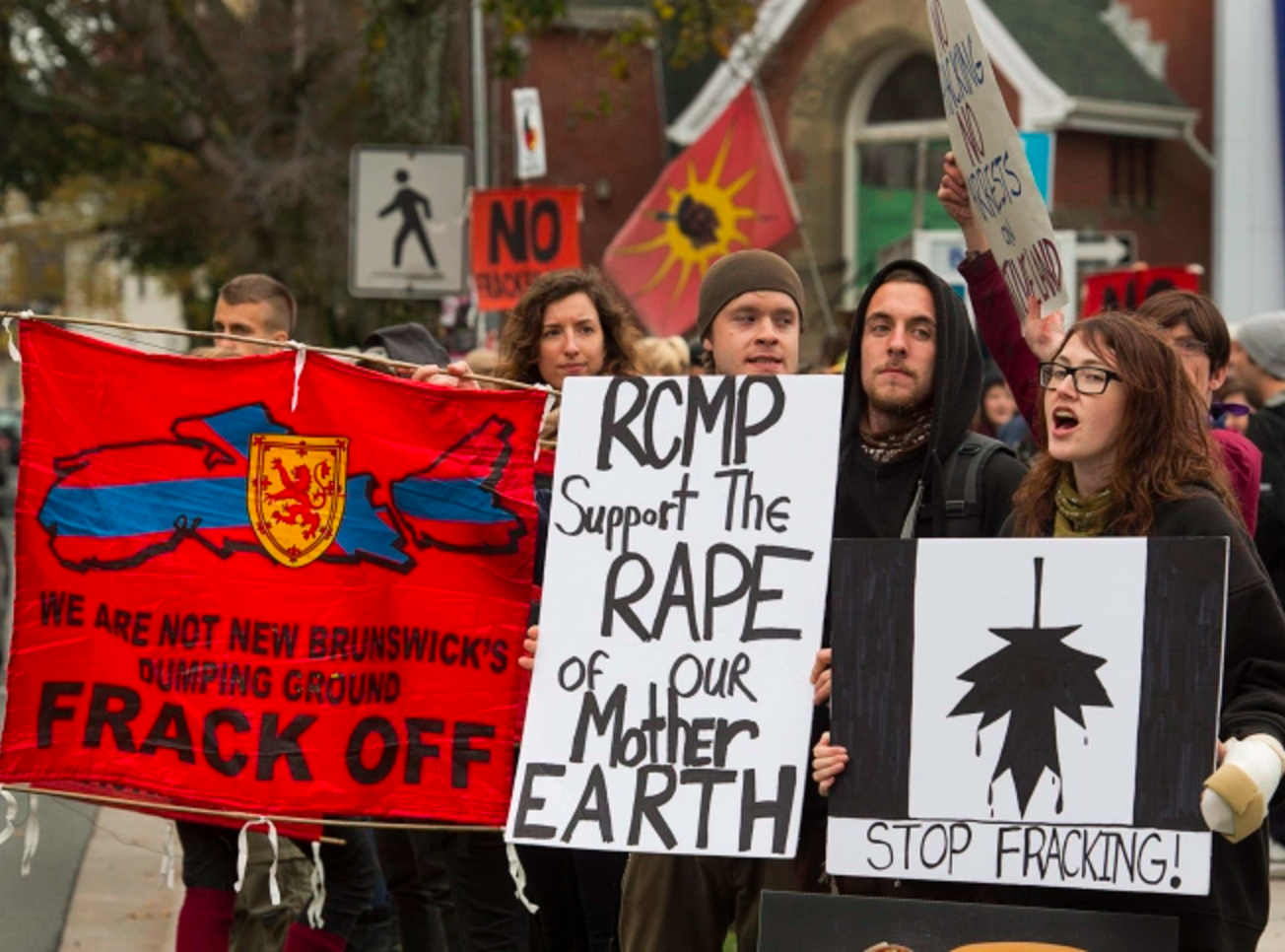
The JIG reported weekly to approximately 450 recipients in law enforcement, government, and the energy sector. These included CSIS, municipal police forces and the departments of Indigenous Affairs and Natural Resources. An annual Strategic Intelligence Report from June 2009 indicates the surveillance focused on 18 “communities of concern” in five provinces across the country, including Kitchenuhmaykoosib Inninuwug (KI), Ardoch, Grassy Narrows, Six Nations and Tyendinaga bands. The JIG boasted to other government personnel that the unit can “alleviate some of your workload as we can help identify trends and issues that may impact more than one community.”
Reports produced by JIG on Native communities were extremely detailed, indicating who the chief was, number of residents, and specific incidents over land issues. The JIG was particularly alarmed about potential disruptions at the 2010 Winter Olympics in Vancouver, and the G8 and G20 summits in Ontario during that period.
The RCMP claims the JIG was dismantled in 2010, but further information shows its work has continued under different guises, such as the National Intelligence Coordination Centre.
How the intelligence is gathered
So, how exactly does this intelligence apparatus gather its information?
None of the documents reveal if various movements and groups are, or have been, infiltrated by undercover officers. Monaghan says they would never have received such information through access to information requests. However, “based on the historical record, there’s no reason to think that they aren’t doing these practices,” he remarks. “During the G20 in 2010, there was (police) infiltration going on, and that was documented… If you talk to groups, there is a lot of anecdotal and experiential comments about infiltration.”
Some of the information is simply culled from the mainstream media and activists’ own social media output and what they put on-line. “Social media, to a certain extent, has replaced the need to go covert," says Monaghan. "It allows the security apparatus to catalog and track the movement in real time, which other social movements have never been subjected to. Social media is mapping the activists.”
Linda Heron has seen this firsthand. In 2011, a company was proposing to build a hydroelectric project on the Vermillion River near Sudbury, Ontario, close to where she lives. Heron started the Ontario Rivers Alliance to oppose the project. On her website, she mentioned that her group had participation from “First Nations citizens”.
That summer, while attending a public hearing at a nearby town, she noticed two clean-cut men watching her. “No sooner had I got home and my phone rang and it was an Ontario Provincial Police (OPP) officer and they wanted to let me know they had been there that night and wanted to talk to me,” recalls Heron. The OPP was particularly keen to learn about the Native members in her group, she recalls, and told her: “We have these web crawlers that goes through the Internet and your press release came out and said that it had First Nations’ members.”
“It just made me angry,” says Heron. “It definitely put red flags that there was something fishy going on here.”
Information is often collected in a more direct fashion: RCMP and CSIS officers will approach people in person. Mark Calzavara, an organizer with the Council of Canadians – an organization targeted by the RCMP – says agents usually approach people in a friendly, non-threatening manner. “All of them are very charming and interesting people and want to draw you into conversations,” he explains. “There’s no whiff of intimidation. They say they are trying to help you, they will offer to get you permits for your next protest. It’s a way to form relationships.”
Not that this always goes smoothly. One day in the fall of 2013, Mohawk activist and lecturer Clifton Nicholas received a telephone call at his home at Kanesatake. This Mohawk community near Montreal was at the center of the 1990 Oka crisis. The person who rang him introduced himself as Francois Allard of CSIS, asking if Nicholas would have a coffee with him.
“For what end?” asked Nicholas (who taped most of the conversation).
“There are a couple of things I would like to talk to you [about],” said Allard.
When Nicholas said he wasn’t interested because he didn’t trust CSIS and “and I am not a rat,” Allard replied he wanted to discuss a trip Nicholas had taken to Greece. Earlier that year, the activist had spoken at a festival in Athens about mining, the tar sands and its impact on Indigenous communities. Nicholas also visited a village in northern Greece that was being affected by a mine built by a Canadian company.
When Nicholas still resisted, Allard suddenly got aggressive, his tone turning derisive. “Wait, wait, wait one more thing I want to talk to you [about], how do you reconcile your Native roots with your anarchist activities?”
“That is my business,” said Nicholas.
“How can you reconcile both?” said Allard. “I would like to have your information on that.” Allard then went on to suggest that Nicholas was exaggerating the role he played during the Oka standoff. “Why do you claim all the time you were behind the barricades in 1990 when the people involved back in 1990 say you weren’t involved at all, why do you keep making that claim?” said Allard, who fastened on this issue, saying “I am telling the truth, admit it.”
The conversation was soon over. Today, Nicholas said the CSIS agent’s aggression was puzzling. “I thought it was really a mind fuck,” he says. “Either it’s a ‘You don’t want to answer my questions? Well then fuck you.’ Or else it’s they were trying to figure out what are my soft points - what points do I feel sore about.”
Nicholas says this was not his first encounter with CSIS. In 2007, after giving a lecture at Concordia University in Montreal, an agent approached him and asked to have a coffee. But when he discovered she worked for CSIS, “I got so spooked I just left…They were kind of trying to recruit me.”
Barbara Low also had a curious run-in with a CSIS agent in the late spring of 2014. She is a Mi’kmaq who lives in picturesque town of Antigonish, Nova Scotia, and is a long-time Native and environmental activist. Low had participated in the anti-fracking blockade in New Brunswick the year before.
Low says she first noticed something was amiss when her garbage and recycling bags went missing. “I thought that’s weird because no one else’s garbage had been taken,” she says. Then in mid-June, she says a man knocked on her door, carrying a clipboard and flashed a CSIS badge. He said his name was Andrew McGinty.
Low says that what followed was a bizarre conversation. “I know there are two reasons why they are there,” she remarks. “They are there to intimidate or to turn. And I thought that they might be trying to turn me.”
Low says McGinty refused to say what exactly was the purpose of his visit, other than to explain that CSIS was concerned about “critical infrastructure and border security.”
“He was a bad spy, I am telling you,” says Low. “He asked that I not tell anyone he had been there. And impressed upon me that RCMP did not know he was there.”
Afterwards, Low made an access to information request to CSIS to find out why McGinty visited her – and was denied any information on the grounds that “it relates to the efforts of Canada towards detecting, preventing or suppressing subversive or hostile activities”, according to the letter she received back.
In response to questions from National Observer about conducting such surveillance, CSIS spokesperson Tahera Mufti noted: "CSIS does not investigate lawful protest or activism. It should be noted that the 2009/2010 SIRC review recognized that CSIS had long exercised special care when undertaking intelligence investigations that affect — or even appear to affect — fundamental societal institutions. SIRC found that CSIS’ fundamental institutions policy and its implementation were strong."
The RCMP, in a statement to the National Observer, said that "As part of its law enforcement mandate the RCMP does have the requirement to identify and investigate criminal threats, including those to critical infrastructure. The RCMP, through the National Critical infrastructure Team, assists in the identification of criminal threats to Canada's critical infrastructure and develops information products that may be used by first responders and the private sector to assess and mitigate risks associated to these threats."
Low, on the other hand, observes: "My assertion is that the Canadian government is working specifically for the oil and gas industry. It is completely intertwined. And that needs to be exposed."
Wouldn't it be a different
Wouldn't it be a different world if the RCMP went around spying on oil industry bosses so they could finger them for tax evasion, bribery and influence peddling?




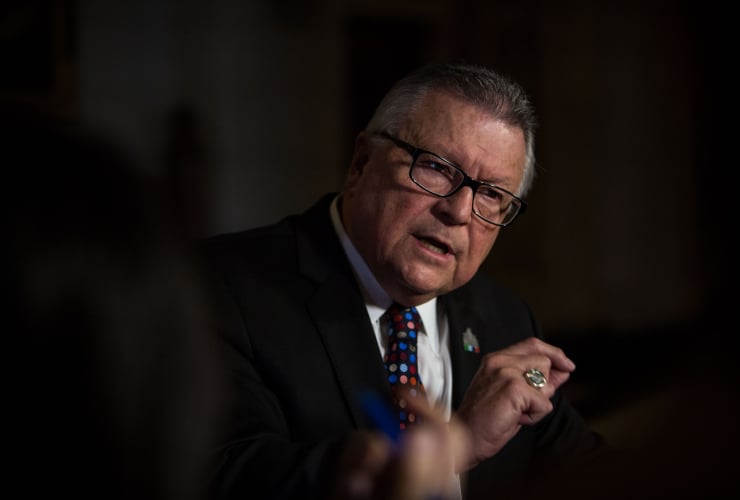
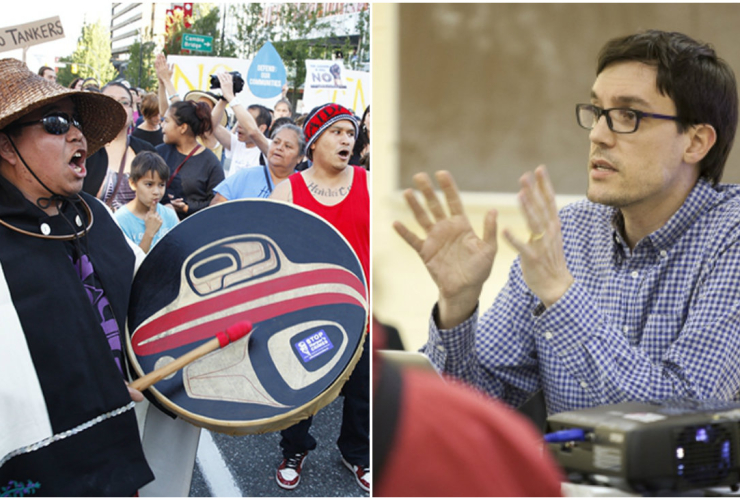
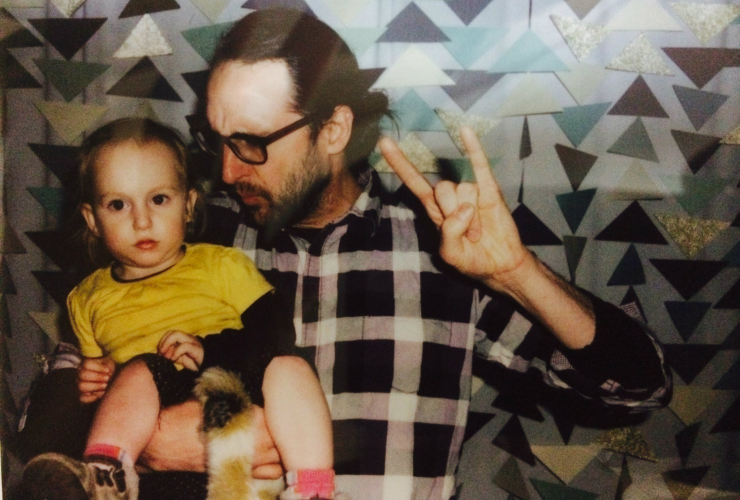
Comments